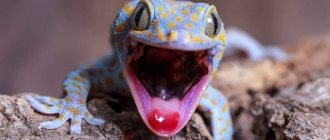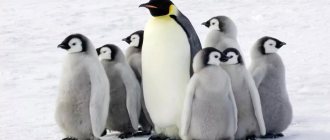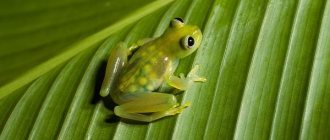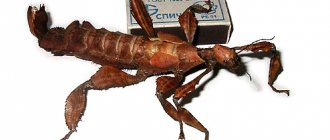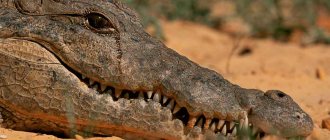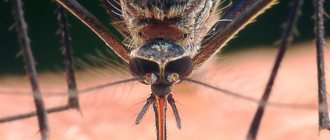The smallest creations of nature can be extremely dangerous to humans. Today you will get acquainted with the most dangerous insects on the planet. Some of them are huge beetles with poisonous stings, while others are barely noticeable and one cannot even imagine that they are carriers of a deadly infection. An encounter with all the insects listed in today’s publication will end sadly for a person with a probability of 99.9%.
How insects can be dangerous
There are about 625 thousand species of insects in the world, and most of them, when adjacent to humans, do not benefit him.
Insects can:
- Be carriers of dangerous viruses and diseases, such as tick-borne encephalitis, plague, typhoid, diphtheria, sleeping sickness and others.
- Be aggressive towards a person.
- Parasitize on the body of livestock and humans.
- Harm agriculture, eat cultivated plants.
- Settling in a human dwelling, damaging food, furniture and other items.
Anopheles or malaria mosquito
These insects, belonging to the genus Diptera, can carry malarial plasmodia, which parasitize the human body, causing malaria. This mosquito is most active after sunset and at temperatures above 10 degrees. Only females are bloodthirsty; when they bite infected people, they become infected themselves and spread the infection to subsequent victims. In 4-10 days spent in the body of a mosquito, the malarial plasmodium has time to mature and multiply, and the mosquito itself turns into an active source of infection for 16-45 days. More than 500 million people suffer from malaria every year, and for 3 million of them, an encounter with a mosquito is fatal. The highest mortality rate from malaria is observed in Africa, which is aggravated by the pathetic state of local medicine.
Top 10 most dangerous animals in the world Animals, like many people, adhere to one law - the survival of the fittest. Despite the admonitions of scientists who claim that the brothers...
Termites
These are insects with a complex hierarchical structure. They are popularly called “white ants”, but they have no common relatives with ants, but belong to the order of cockroaches. They live in Africa and South America, living in colonies. Unlike anthills, the main part of which is underground, termite mounds can rise several meters above the ground.
Humans are not a source of food or a natural irritant for termites, but these insects can harm humans with little or no contact with them. Losses caused by termites amount to billions of dollars per year. Hungry insects completely chew off wooden buildings, eating them away from the inside, which makes it difficult to detect termites in the house early.
Insects are destroyed with insecticides, the wood is treated with special preparations, and in areas with a high concentration of termites, houses are built on stilts broken at right angles under the building itself: termites cannot bend their body in half and simply do not crawl into human habitation.
Lice
Common human parasites that many encountered in childhood. There are head lice, body lice and pubic lice. The head louse is a small translucent insect up to 5 mm long that feeds on human blood. Unlike bedbugs and fleas, it is constantly located on the scalp of its owner.
Insects are very small and fast, so a person detects their presence on the head by the following signs:
- White, tightly seated bubbles appear on the roots of the hair, colloquially called nits. These are lice eggs, which the female attaches to the hair with her sticky secretion. The main locations for nits are the back of the head and the area behind the ears.
- At the site of the bites, you can find traces in the form of red dots that itch very much.
Basically, lice are not dangerous to humans as carriers of diseases (body lice carry typhoid fever, but now they are found only in completely unsanitary conditions). There is an opinion that pediculosis (infection with lice) is a disease of declassed elements and people who do not take care of their hygiene, but this is not so.
Clean hair is much more attractive to lice; they can move onto a person through hugs and other bodily contacts, as well as through household means (using someone else's comb, hair tie, bed linen).
You can cure lice at home - pharmacies offer a wide range of shampoos that kill lice and nits. After using them, all that remains is to carefully comb out dead insects and their eggs from your hair. Folk remedies include hellebore water (often ineffective) and kerosene (effective, but can lead to allergies and damage to the skin and hair).
Regular or black T-shirt
About 30 mg of poison, which is contained in the blood of this beetle, will be enough to kill a person. If this poison gets on the skin, burns and blisters will appear that do not heal for a long time. If the poison gets into the blood, it will lead to disruptions in the functioning of the gastrointestinal tract, kidneys, and liver. Mikes mainly live in the Caucasus and southern regions of Russia. In the middle zone you can find no less dangerous varieties of these beetles - a rich green Spanish fly and a beetle that resembles a ladybug, only with an elongated body. It is better not to come into contact with these insects. But if suddenly their secretions do get on the skin, this area should be washed quickly and well with soap and water. And monitor your condition: if you start to feel dizzy and feel nauseous, consult a doctor immediately.
Black-legged tick
Contrary to popular belief, mites do not belong to the class of insects, but are in the same taxonomic category as spiders. They live in the Northwestern United States; they can also be found in wooded areas of Ukraine, Central and Northwestern Russia.
They feed on the blood of animals, predominantly parasitizing white-tailed deer, biting into the skin with their jaws and securing themselves there with a special sticky secretion. Black-legged ticks are the main carriers of the bacteria that cause Lyme disease, Borrelia.
This disease manifests itself in the form of specific rashes on the skin, a feverish state of the patient, and in the later stages – destruction of bones and joints. Ticks are active all year round, but the risk of being attacked is greatest in the summer.
In order to avoid bites, you should follow some rules when going out into nature:
- Ticks bite in the thinnest and most unprotected places, so the collar should be fully buttoned and the trousers tucked into the shoes.
- It is not recommended to wear flip-flops or sandals; ticks can easily crawl between your toes.
- It is better to choose light-colored clothes for a picnic. It may not be practical, but it is much easier to spot ticks on such clothes.
- Parasites are susceptible to strong odors of spices, so before going out, you can spray your clothes with a decoction of cinnamon, cloves, star anise, or simply put dry spices in your pockets.
- Repellents should be sprayed on tents, backpacks, and all other items that may be useful on a hike.
Nomadic ants
These insects do not belong to any specific taxonomic order. It happens that even sedentary species of ants can leave their homes. What causes this behavior is unclear, but scientists suggest it could be explained by their complex social behavior.
In Central Africa and South America you can find such living migrating anthills, leaving nothing alive on their way. As in an ordinary anthill, there is its own hierarchy: soldier ants catch prey, and the queen travels with the colony.
Local residents have already adapted to the migration of ants, and when the line begins to approach the village, they take all the livestock from there and leave for a while. After such an invasion, there are no flies or other pests left in the houses, so even such insects bring benefits to humans.
But if you stay in the path of the ants, your pets will be in trouble - the colonies of insects are huge, and they are capable of killing animals hundreds of times larger than themselves.
Lonomiya
Among the slow and seemingly indifferent caterpillars there are also dangerous creatures. The caterpillar of the small nocturnal moth Lonomia lives in the rainforests of South America, and local residents nicknamed it the “lazy clown.” This hairy caterpillar is wonderfully camouflaged among greenery, so you can accidentally suffer from contact with it. The caterpillar has a very attractive appearance - bright, beautiful, covered on all sides with long fibers. But they contain a very strong toxin, which is so strong that the affected person’s blood clotting is very quickly impaired, the kidneys fail, and hemorrhage may occur in the brain and other organs. Red blood cells begin to break down, and multiple organ hemorrhage occurs. Outwardly, this is expressed in the appearance of large bruises on the skin. If a person manages to “pet” several of these caterpillars at once, he will almost certainly die - a massive brain hemorrhage will quickly begin, which will lead to a stroke and death of the victim. Unfortunately, Lonomia caterpillars often appear in orchards, where Brazilian farmers accidentally stumble upon them. As a result, 10-30 people die a year, and many more remain disabled.
Wasp
The most dangerous insects in the world can kill a person after the first bite. Wasps cannot be classified in this category, but their bites can be very unpleasant. These hymenopteran insects live throughout the northern hemisphere, excluding the Far North zone. Up to 20 thousand individuals live in families, clearly distributed along the hierarchical ladder.
It is not difficult to distinguish it from a bee: the wasp has a slimmer, elongated abdomen, a bright black and yellow color and a completely smooth body without villi. Wasps occupy an important position in the ecology of natural systems, destroying garden pests - flies, larvae and caterpillars.
Unlike bees, which attack a person only when there is a clear threat to life, wasps are aggressive by nature and attack anyone who frightens and angers the insect with something (bright light, perfume, sharp sounds).
The wasp's venom is toxic to humans; a swelling occurs at the site of the bite, which goes away within a few days; if a person is allergic, the consequences can be more serious - a large rash on the skin, nausea, vomiting. A lethal dose of venom is contained in 700 stings, so in most cases wasp stings are not life-threatening to a healthy person.
Brown recluse spider
The second spider on our list, the Brown Recluse, does not release neurotoxins like the Black Widow. Its bite destroys tissue and can cause damage that can take months to heal.
The bite very often goes unnoticed, but in most cases the sensations are similar to those of a needle prick. Then within 2-8 hours the pain makes itself felt. Further, the situation develops depending on the amount of poison that enters the blood. The venom of the brown recluse spider has a hemolytic effect, which means it causes necrosis and tissue destruction. A bite for small children, elderly and sick people can be fatal.
Black Widow
The most dangerous insects in the world - black widows or karakurts, actually belong to the class of arachnids. On the territory of Russia it is found in Crimea, Rostov region, Altai region. In particularly hot years, cases of spider bites have been reported in the Moscow region, but this is an exception; as a rule, karakurts never rise so high on the map.
The black widow is a small spider with characteristic bright red spots and a black abdomen, so it is very easy to distinguish it from simple harmless spiders. Karakurts received this nickname due to the peculiarities of mating behavior, when females eat males immediately after mating.
Spiders can be found in ravines and wastelands; they rarely approach human settlements and never attack first. Spider venom contains a dangerous substance called latrotoxin. The first symptoms appear 15 minutes after the bite: a person experiences muscle cramps, nausea, dizziness, and blurred vision.
It should be borne in mind that each organism perceives poison in its own way, and a bite may not always be fatal, but you need to seek help as soon as possible, since death from a karakurt bite can occur within several days.
Androctonus
Androctonus is the most poisonous scorpion in the world, which loves arid places. Its length is no more than ten centimeters. Androctonus venom contains strong paralyzing neurotoxins and takes the life of an adult within seven hours, and children die even faster. The bite of a dangerous scorpion feels like a weak prick. If medical assistance is not provided in time and an antidote is not administered, then it will not be possible to save the victim.
Hairy caterpillar Coquette moth
The coquette moth lives throughout North and South America. An adult butterfly is not dangerous to humans and their homes, which cannot be said about its larva. A characteristic feature of the caterpillar is the long hairs on its body, which make the insect seem very cute and fluffy, but touching the poisonous spines of this caterpillar hidden in the hairs causes poisoning and burning pain.
These insects live in deciduous forests, settle on trees and feed on leaves and flowers. The caterpillar will not chase or attack a person, so it is very simple to avoid unpleasant consequences from the thorns - do not touch them.
Romantic and dangerous hemipters
1They are also called “kissing bugs.” These bugs have huge tubular throats, which they use to suck sap from trees and... blood from animals. The tube-shaped large mouth allows these insects to obtain enzymes and nutrients from living organisms. Everyone wants to survive in this world.
It's not scary until you find out that you can also become their victim. Chemipteras are dangerous for humans because they are carriers of the deadly Chagas disease.
This disease develops very, very slowly. Twenty years after the bite, you will have no idea that your intestines are slowly decomposing and heart disease is developing. And after decades have passed and obvious symptoms appear, it is too late to treat the person.
This is the poisonous “chemiptera kiss” from the past.
It is estimated that there are more than 7 million people around the world infected with Chemiptera.
Hello everyone from Chemiptera.
Cockroaches
The red cockroach cannot be called the most dangerous insect, but it certainly can be the most annoying in the whole world. The red cockroach is the most common household pest in our country; several decades ago, these insects lived in almost every apartment building, so it is difficult to find a person who has never fought with them in their life.
The cockroach is a medium-sized insect that lives near humans. Favorite places to live are cracks in walls, floors, and the space under the sink and bathtub. They feed on leftovers from the human table, pick up fallen crumbs, sneak into drawers, refrigerators and spoil food. The lifestyle is predominantly nocturnal.
Insects are very shy, and when the switch is clicked, they usually manage to hide from human eyes.
Cockroaches carry many diseases, such as diphtheria, tetanus, hepatitis, and also help spread worm eggs. Some people are so accustomed to cockroaches in their home that they do not consider being around them something dangerous or disgusting, but most still try to get rid of cockroaches as soon as possible. It is advisable to carry out disinfestation together with your neighbors.
Even if the cockroaches did not come into the apartment from them, the insects could have spread throughout the entire house. Special insecticidal aerosols are used to control pests; for preventive purposes, you must monitor the sanitary condition of your home, remove crumbs and food debris from tables, floors and chairs, fix leaking faucets in the bathroom and regularly clean the house.
Pogonomyrmex maricopa
An ant soaked in poison is ready to sting without warning. It will methodically bite its victim until it dies. Ants of this species live in North America. The strength of their sting on the Schmidt scale is close to maximum. It is noteworthy that when an ant deals with its victim, in addition to toxic substances, its venom releases a special alarm pheromone, notifying other members of the colony about the danger and calling on them to unite in the fight against the enemy. For a person, such an organized attack can be deadly. A bite from just 1 individual will cause severe pain, which can last up to 4 hours.
Rat fleas
The most dangerous insects in the world during the bubonic plague pandemic of the 14th century, after which only 2/3 of Europe's population survived. Fleas, unlike lice, do not live directly on their host, but try to stay close to rat nests, where they can always drink blood.
Rats are not the only hosts of fleas; hungry insects can attack pets and humans . The long limbs of the flea allow it to jump half a meter and quickly move between its victims, and insect bites are very painful and cause the formation of itchy, purulent ulcers on the skin.
Fortunately, today rat fleas, like rats themselves, are rarely found near human habitation, but, despite the increased level of medicine and sanitary conditions, it is recommended to regularly treat pets against fleas with special preparations and put on flea collars.
Protection against insect bites
All biting insects listed in this article are dangerous to humans. But you can protect yourself from these tiny killers by wearing long sleeves and long pants. Use repellents by spraying them on shoes and clothing. Use mosquito nets in their habitats.
You can also protect your home with mosquito nets, coils and mosquito sprays, which will act as an insurmountable barrier to biting insects. But remember that repellents should not come into contact with open wounds and that they can cause skin irritation.
Repellents should not be used by pregnant or lactating women, and they must be stored out of the reach of children. Avoid walking near swamps, fields with thick grass and dense forests, this is where biting insects await their victims.
Bed bugs
Bed bugs are often found in unsanitary conditions, such as barracks, children's camps, or old apartments. Nothing will stop the insects from moving into a new, clean apartment, because bedbugs go without food for a long time, which allows them to bide their time, hiding in closets, in linen or on other people’s clothes.
A bedbug is a small insect up to 5 mm long that feeds on human blood. The insects themselves have a light brown, translucent color, making them difficult to identify, but when an individual drinks blood, its body increases in size and acquires a rich crimson hue.
Bedbugs settle on the back of mattresses, go out hunting at night, and the next morning a person wakes up to find bite marks on his body. In a healthy person, these are just red dots, without itching or irritation, and therefore people often do not even suspect that an entire colony lives in their mattress.
Also, many bedbugs are carriers of typhoid, anthrax and fever pathogens, but through bites they are not transmitted to humans, because the insect is interested in ensuring that humans can supply it with blood for a longer period of time.
To combat bedbugs, chemical insecticides and heating of apartments are most often used - insects are very sensitive to the temperature of their home, so they die at 50 ° C.
Cordylobia anthropophaga
Another fly whose larvae develop in the human body. This type of fly is widespread on the African continent and in Saudi Arabia. The insect lays its eggs on sand or on clothing soaked in urine or sweat, and the larvae patiently wait for their future host. Upon contact with human skin, they begin to actively screw into it, as a result of which tropical myiasis develops on the body. Thus, the larvae stay in the human body for up to 15 days, and then they emerge and go to pupate in the ground.
Human gadfly
Botflies are parasitic dipterous insects native to Central Africa. Only one species is dangerous to humans - the human skin botfly. It is noteworthy that the adult insect does not consume food at all, but lives off the nutrients accumulated in the larval stage.
Throughout their short life, and gadflies live no more than a month, their only task is to find a mating partner and lay eggs. The hatched larva secretes special substances that corrode the skin and penetrates inside. With the blood flow, insects can travel throughout the body and even penetrate the brain, literally eating it out from the inside.
The human gadfly is one of the most dangerous insects, as it is capable of infecting the human brain from the inside.
The duration of parasitism is up to 9 months, after which the larva drills a fistula hole in the skin and emerges from the pupa. Within a few seconds, the adult emerges from the pupa and the cycle repeats. Favorite places for laying eggs are the back, stomach and scalp. The main symptoms of a gadfly infestation are a general deterioration in health and weight loss.
If the larva chooses an eyeball, part of the brain or another internal organ as lunch, this can result in death for a person. In tropical countries, you need to regularly treat your clothes with special repellents, even when drying outside, and not dine on food sold on the street.
Tarantula Hawk
The Tarantula Hawk is actually a species of wasp native to North America. They get their name because they hunt tarantulas (tarantula spiders) by stinging and paralyzing them. The tarantula hawk then lays eggs in the spider and buries it alive.
When the eggs hatch, the larvae eat the spider alive within 35 days. The tarantula hawk can reach up to 5 centimeters in length. The sting of this beautiful but formidable wasp is considered one of the most painful!
Few animals can defeat the fearsome tarantula spider, but this formidable road wasp can poison it and feed it to its offspring. If you found this article interesting, then perhaps you will be interested in the Nile crocodile - a perfect killer!
Predator
Predators are the largest species of bedbugs in the world: the length of an adult individual can reach three centimeters. These insects inhabit almost the entire globe, including Russia. They live almost everywhere: from forest floors to basements and attics of human homes.
They feed on other small insects, lying in wait for them in dark places. When the victim comes close enough, the bug attacks it, pierces its proboscis and lets in a special secretion that dissolves the insides of the insect, after which it sucks them up. The bite of a predator feels like a bee sting; painful blisters may form in its place, swelling and severe itching may appear.
Another type of predator is found in the tropics - triatomine bugs. They bite sleeping people on the lips, eyelids and other parts of the body with thin, uncovered skin, for which locals call them kissers. According to statistics, triatomine bug bites claim more lives than malaria mosquitoes and other insects.
Lonomia obliqua
The caterpillar of a butterfly from the peacock eye family can be found in tropical forests, orchards and village gardens in some Latin American countries. The caterpillar's body is covered with poisonous spines that easily pierce human skin. After contact with lonomia, a toxin enters the bloodstream, reducing its clotting ability. After a short period of time, a person develops internal bleeding, hemorrhage in organs, including the brain, which can be fatal.
Bullet Ant
They live mainly in the tropics of South America. The way of life is not much different from other species of ants; they live in colonies in nests at a depth of 1 meter. The length of one individual can reach three centimeters; the insect has powerful jaws.
Bullet ants are predators and hunt other insects, spiders and even birds . A person is not a direct target for them, but a colony disturbed by him can attack in self-defense. The venom of such an ant causes paralysis of the limbs and convulsions, but one bite usually does not lead to the death of a person.
Vespa mandarinia
It belongs to the family of true wasps, being the largest representative of the hornet genus. It lives in Asian countries and in the eastern part of Russia. Hornets attack people extremely rarely, only for the purpose of self-defense. The extremely painful bite of this insect causes swelling, redness, can provoke an allergic reaction, and, as a result, lead to death. Simultaneous bites from several individuals at once can kill even a healthy person who does not suffer from allergies.
Malaria mosquito
Malaria mosquitoes are widespread throughout most of the world, but are most concentrated in humid tropical countries. On the territory of Russia they live in Western Siberia. Mosquitoes are carriers of malarial plasmodia, the causative agents of a dangerous disease.
Insects feed on the blood of people and animals and transfer parasites from sick to healthy people . It is easy to distinguish a malaria mosquito from an ordinary one: when an insect drinks blood, its abdomen lifts up almost perpendicular to the surface of the skin; in ordinary mosquitoes it is parallel.
There are several types of malarial plasmodia, and each of them causes certain changes in the patient’s body, but the most severe form of infection, common in the African region, causes fever, anemia, enlargement of the liver and spleen, and in 80% of cases ends in the death of the patient.
African honey bee
The most dangerous insects in the fauna of the African continent are the Africanized bee. This is an artificially bred hybrid that was not found in nature until 1956, when Brazilian geneticist Warwick Kerr crossed common European honey bees with wild African ones.
The scientist planned to breed a new species that would combine the high performance of African bees with the calm disposition of European ones. The experiment did not live up to the hopes placed on it and led to the emergence of aggressive killer bees.
African honey bees differ from their domesticated counterparts:
- They are several times more aggressive than ordinary bees and attack everyone who comes within ten meters of the nest.
- They attack their victims in a swarm and are able to wait for a long time and pursue them.
- After the appearance of an external stimulus, the bees calm down after at least 8 hours.
- They cause enormous damage to apiaries, destroying domestic bees and taking honey with them.
An African bee sting is no more dangerous than a regular bee sting, but the specificity of their behavior leaves the victim no chance: the bees attack and sting in a swarm, introducing a lethal dosage of poison equal to approximately 500 stings.
Africanized killer bee
The main danger of these bees is their aggressiveness and desire to capture new territories. If ordinary bees do not attack without threatening the hive, then a cross between African bees and other bees attacks everything that moves nearby. They do this in a swarm, and the venom of each individual is no weaker than that of a snake. One such killer bee will not do much harm, but if it is a swarm, the victim will begin a severe allergic reaction, quickly developing into anaphylactic shock, which most often ends in death. It is difficult to distinguish a human-bred bee from an ordinary honey bee. Their danger lies in their high ability to assimilate to new conditions, therefore, having appeared in Brazil, they gradually spread throughout America, and then headed east, destroying other species of bees.
Top 10 most dangerous snakes in the worldA person cannot be indifferent to snakes - watching them from a safe place causes delight, and close contact often turns into...
Fire ants
In terms of lifestyle and habitat, they are very similar to bullet ants, only with the difference that they are 2-3 times smaller. In some South American Indian tribes, fire ants (in the local language - takandir) are used for initiation rites.
The boy receives the right to marry and hunt only after he puts gloves full of ants on his hands and stands firm for 15 minutes, and the ritual must be repeated 20 times. For several weeks before initiation, boys must drink a special decoction of dead ants.
Local shamans believe that this will help boys develop immunity and cope with bites more easily. The solenopsin contained in the venom causes local tissue swelling, paralysis of the limbs, nausea, fever and dizziness. An ant sting feels 30 times worse than a bee sting, and even one dose can be fatal to an allergy sufferer.
Giant Asian hornet
Ordinary hornets do not cause fear to most people, but even locals try to stay away from these Asian giants. In the homeland of these insects - in Japan and Thailand, they are called murder hornets. The length of an individual can reach seven centimeters, it is the world's largest species of hornet known to man.
Insects prefer to live in paper nests made of bark, which they build in light forests or groves. They feed on other insects and attack humans only in cases of obvious threat, but they can harm people in other ways: hornets massively destroy families of domestic honey bees, causing significant losses to beekeepers.
The venom of murder hornets contains a substance called mandorotoxin, which destroys brain neurons and inhibits the activity of the nervous system. The bite itself is also very painful: survivors say it felt like hot nails were being driven under their skin. One dose of poison causes severe swelling and tissue necrosis, and an encounter with several hornets can be fatal for a person.
Locust
Locusts are a type of insect common on all continents except Antarctica. They grow from 2 to 10 centimeters in length. Every day, one individual locust eats an amount of plant food equal to its own weight. They are capable of gathering in flocks of several billion individuals and destroying crops over large areas, thereby indirectly contributing to the occurrence of famine. Africa especially suffers from locust infestations. The noise emitted from the formed “flying cloud”, the area of which can reach up to 1 thousand km. sq. can be mistaken for thunder.
5
Tsetse fly
The tropical forests of Central Africa are home to another deadly insect - the Tsetse fly. It can be distinguished from an ordinary fly by a characteristic pattern on the wings and a large, pronounced proboscis. The real scourge of the African continent is not the flies themselves, but the trypanosomes living in their blood.
Flies feed on blood and become infected from antelopes, and then transfer the microorganisms into the blood of other animals through their saliva. Characteristic signs of “sleeping sickness” are swelling of the lymph nodes, skin ulcers, drowsiness and paralysis. People with trypanosomiasis can suddenly fall asleep while doing simple things, which is why the indigenous people gave it a name accordingly.
There are two forms of sleeping sickness - Gambian and Rhodesian.
The first can occur in humans and primates and lasts up to five years, the second is specific to humans and is acute, destroying the body in six months. More than 2,500 cases of the disease are diagnosed every year in Africa. Sleeping sickness is easily treatable, but the drugs are expensive and inaccessible to the majority of affected people below the poverty line.
| Top insects | Habitat | Danger to humans |
| 1. Black-legged tick | Northern USA, Western Europe, Ukraine | Carries Lyme disease pathogens and feeds on blood |
| 2. Rat fleas | Everywhere | They carry pathogens of various diseases and leave ulcers from bites. |
| 3. Malaria mosquito | Everywhere | Carries malaria pathogens, feeds on blood |
| 4. Tsetse fly | Central and Southern Africa | Carries sleeping sickness pathogens |
| 5. Human gadfly | Central America | Larvae parasitize the human body |
| 6. Fire Ant | South America | Painful venomous bites |
| 7. Bed bug | Everywhere | Feeds on blood and lives in human homes |
| 8. Africanized bee | Africa | Destroy peaceful bees, are aggressive, attack people |
| 9. Black Widow | Southern Europe, South America | The most powerful venom among European spiders |
| 10. Termites | Everywhere | Destroying wooden buildings |
Around the world, tens of millions of people die every year from diseases carried by insects and from their bites, but we cannot turn a blind eye to their benefits. The most dangerous African bees provide local residents with honey, ants destroy other more dangerous pests, and even parasitic insects regulate natural relationships, infecting old and sick animals.
Author: Alexey Simonov
Article design: Oleg Lozinsky
5) Scorpios
These representatives of arthropods – scorpions – pose no small danger. These arachnid creatures number more than 2,450 species in their family. But out of a huge crowd of varieties, only 25 are deadly poisonous. Among them there are large specimens of 20-21 centimeters and very small ones reaching a maximum size of 12-13 mm. Scorpions are one of the oldest creatures on the planet, and are also not inferior in toxicity to spiders and snakes. Scorpions sometimes attack people by creeping in unnoticed from the back or side. They have very developed vision and therefore in most cases do not approach the victim directly. When I attack its prey, the scorpion thrusts its sting and injects poison. Possessors of a less toxic poison may cause the following symptoms: temporary fever, chills, temperature, headaches, swelling, burning at the injection site, nausea and lethargy. But poisonous representatives cause the following symptoms: dizziness, impaired consciousness, convulsions, tachycardia, asphyxia and sudden changes in pressure. In more severe cases: blood poisoning, paralysis, epilepsy, coma and death.
